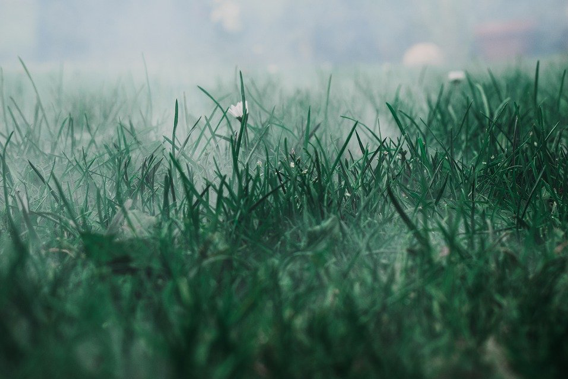Category Archives: Common Allergies
Common Big City Allergies
What are the common city allergies? It’s common for large cities to suffer from overpopulation and pollution. Every year the Allergy and Asthma Foundation of America publishes a list of cities every year. This list ranks cities according to the pollen count and the use of allergic medication.
Allergies occur when your immune system overreacts to allergens such as pollen and consider these substances harmful for the body. The body’s reaction to these harmless substances causes breathing problems, sneezing, and coughing, among other problems. As cities suffer from overpopulation, they contain numerous allergens, leading to negative reactions within the body. Below we will discuss some allergies that are common in big cities:

(Source)
1. Seasonal Allergies
Seasonal allergies, such as hay fever, go by many names, one of which is allergic rhinitis. According to the American Academy of Allergy, Asthma, and Immunology reports, about 8 percent of Americans experience seasonal allergy in the United States (Source).
When your body reacts with outdoor allergens, it triggers your immune system’s abnormal response and causes an allergic reaction. The most common seasonal allergens include pollen from weeds, grass, trees, and other sources. However, various plants consist of heavy pollens that do not trigger any allergic reaction.
The name hay fever comes from the season of hay cutting, which happens in the summer season. That is when many people living in big cities experience symptoms of hay fever. In winter, there are fewer chances for seasonal allergies to trigger.
Many people experience this condition throughout the year. Your condition depends on where you live and how severely your body reacts to allergens.
Symptoms
Here are some symptoms of seasonal allergies that you need to consider:
- Postnasal drainage
- Ear congestion
- Itchy ear canals, throat, and sinuses
- Itchy and water eyes
- Stuffy and runny nose
- Sneezing
Below you will find some less common signs of seasonal allergies:
- Coughing
- Wheezing
- Shortness of breath
- Headache
People who suffer from hay fever also develop asthma. Their condition gets worse when they have both conditions together, triggering an asthma attack.
2. Pollen Allergies
Allergic people in the United States are mostly allergic to mold. You will find these substances near parks and areas with weeds, grasses, flowers, and trees. When a person allergic to pollen breathe in the tiny pollens from the air, their body’s immune system overreacts and develops these symptoms.
The immune system mostly defends your body from bacteria and viruses, but sometimes it overreacts to various substances called allergens. There are various symptoms of pollen allergies. The following symptoms are familiar:
- Watery eyes
- Stuffy nose
- Sneezing
3. Food Allergies
Cities in the United States are full of restaurants and food chains. A massive population of people, on average, consumes a single meal from these restaurants every day. Most people are not aware of the ingredients used in making food.
When they consume it, they are allergic to it. Their body starts showing signs of allergy. Food allergies can cause severe symptoms, and sometimes, this can be life-threatening. Symptoms of food allergies can be mild and severe, depending on the condition of the person. Here are some of the symptoms and signs of food allergies:
- Teary eyes
- Runny nose
- Diarrhea
- Nausea
- Wheezing
- Itchy or red skin
- Skin rash
- Swelling of face and lips
- Burning sensation of mouth and lips
- Mouth tingling
You can avoid food allergic reaction by wearing a tag with a list of items you are allergic to and checking the ingredients of the food items you consume.

(Source)
4. Mold Allergy
The spores of mold float in the air. Mold is a type of Fungi and found near damp areas. They live on four things food, suitable temperature, air, and water. You can also find mold outside your house in your garden. Breathing mold is standard, and in cities, everyone breathes the spores in. However, this can trigger your immune system if you are allergic to it.
The immune system treats molds as allergens and makes your body overly react to this harmless substance. Here are some of the symptoms and signs that you may experience during the allergic reaction to mold:
- Postnasal drip
- Itchy and watery eyes
- Congestion
- Coughing
- Sneezing
Many people confuse their mold allergy to a sinus infection or cold. However, symptoms of both the conditions are similar, but the causes are different.
Conclusion: Consult Dr. Sneeze bout Your Allergy
People living in cities are at a higher risk of developing allergies. So they need to care more and maintain their lifestyle. An immunologist can help you with your allergic conditions. They will help reduce the symptoms, allowing you to focus on your life.
If you are looking for an immunologist in New York City, consult top nyc allergist Dr. Boyan Hadjiev. He will provide a complete diagnosis and treatment plan for your allergies. To make an appointment, you can call us at 212-319-5282 or visit our website for more details about allergies. You can also consult with our doctor from anywhere around the world through our telemedicine services.
Sources
https://www.webmd.com/allergies/food-triggers
https://www.aaaai.org/conditions-and-treatments/allergies/mold-allergy
https://www.healthline.com/health/allergies/mold-allergy-symptoms#symptoms
https://www.healthline.com/health/allergies/seasonal-allergies#symptoms
https://www.healthline.com/health/allergies/pollen#types
https://www.medicalnewstoday.com/articles/14384#food_allergy_symptoms
The Most Evident Signs That You Are Allergic to Something
What is an Allergy?
Allergies take place when your immune system reacts to a substance that is particularly not harmful to the body. These substances are called allergens, and they mainly include foods, pet dander, or pollen. The job of your immune system is to fight against harmful diseases and keep your body healthy. The immune system attacks everything, which results in reactions and leads to allergies.
The best thing about your immune system is that it adjusts to your environment. For instance, if the body runs into something like pet dander, it immediately realizes that this is harmful. Therefore, in this case, the immune system fights it to save your body from attack. Today, Allergies are prevalent, and several treatments are there to aid you in troubleshooting these.
Common Symptoms of Allergies
Different Allergic conditions have numerous symptoms. Therefore, here are some of the symptoms you will come across:
Inflammation of the Eyes and Nose
When your body is about to suffer from an allergy, you may experience inflammation of your nose. This causes a runny nose and excessive sneezing. This means that there was something that you were not able to tolerate in the environment. For example, there might be dust in the atmosphere which has made the body to react. In this case, you will only be able to cure yourself if you visit a doctor immediately, and ask for an anti-allergic. Similarly, your eyes can also be inflamed, which could result in watery eyes, and you could feel itching in your eyes.
Rashes
Moreover, there might be cases where your body could react to any antibiotic or any other thing in the environment. In such cases, rashes can appear everywhere on your body. Any rashes caused by allergies are known as urticarial rashes or nettle rash. When this happens, you feel very itchy as it is annoying and unbearable. The worst case of rashes is that your skin turns all red.
Swelling
Your lips, throat, and tongue, etc. can swell if you get attacked by allergic disease. Usually, this also starts with an itchy feeling and can get worse. Sometimes, a perilous mouth disease, Angio-oedema takes place which can be a serious condition and can lead to airway obstruction. People might have issues while swallowing. Moreover, it is so dangerous that it can stop your breath and may lead to death.
Breathing
When some types of allergies are about to attack, people often experience breathing difficulties. These mainly include breathlessness, and chest tightness, etc. This is the case when you are about to get anaphylaxis, a severe type of allergy. This might be life-threatening.
Conclusion
If you go through an allergy, make sure you take proper care and are aware of what to do in different cases. Some of the most important signs are discussed above. Moreover, you can also experience tummy pain, vomiting, and nausea in case of an allergy. It is vital to treat yourself immediately to avoid bigger problems in future.
An Overview of the Most Common Types of Allergies
Allergy – An Overview
Your body comes across a situation where your immune system sees a substance as harmful. Such situation is known as allergy. However, this is not the case as that substance is not harmful. The immune system reacts, and you may suffer from an allergy. You can suffer from a large number of allergies, depending on the seasons. However, some can last long, and you will have to make proper plans with your doctor. The best way to prevent an allergic reaction is by avoiding the allergens. Now, let’s have a look at the different types of allergies that can occur in a human body:
Types of Allergies
If you suffer from any of these, make sure that you have perfect knowledge of each one of them.
Pollen
Pollen is among the most avoidable allergens as there are plenty of them. Various plants usually excrete it. The most common ones include trees, grass, flowers, and mostly weeds. As it has a light, fluffy texture, therefore, this makes it easy to travel through the air. Avoid this by trying not to remain outdoors for long periods of time. You should try not to go to places where there is high vegetation. If you suffer from allergies, pollen leads to symptoms including coughing, sneezing, and having a runny nose.
Dust Mites
The most common and frequently caused type of allergy is dust mites. It is difficult to find dust mites on the floor as they are very tiny. You can find this type of stuffed materials, furniture, and carpet, etc. You can stay away from it by keeping a dust-free environment in your house and offices. To minimize the risk, regular vacuuming, and dusting is vital.
Mold
Mold shares traits with dust mites and pollen, and it is also a widespread allergen. However, the mold is found in water and some types of moisture. This is the main reason why mold is usually found in laundry areas, bathrooms, basements, and outdoor areas such as grass. Therefore, to prevent the development of mold, proper ventilation of air in these areas is recommended.
Food
Some of you might have food allergies mainly from peanuts, seafood, and dairy products. As they are ubiquitous, traditional recipes have been introduced to have alternative versions of these. If you are allergic to a specific food, the symptoms will start to develop during the start of your meal. These symptoms include diarrhea, vomiting, shortness of breath, swelling, nausea, and low blood pressure. The best way to stay away from this is to avoid the food altogether. However, a common food allergy treatment is epinephrine.
Bee Stings
Many people hate bees. The toxin that insects produce when they bite you can cause an allergic reaction. This is the most dangerous type of allergy. Instead of being low-risk, bee stings are considered as the most dangerous. Common symptoms of this include swelling of your tongue, breathing difficulty, and low blood pressure. Make sure you go to the doctor immediately after a bee sting.
Call our offices at 212-319-5282 to schedule an appointment.
Serving all of New York City and the Tri State Area including Zip Codes: Top Allergist NYC Midtown, Chelsea and Clinton: 10001, 10011, 10018, 10019, 10020, 10036 | Gramercy Park and Murray Hill: 10010, 10016, 10017, 10022 | Greenwich Village and Soho: 10012, 10013, 10014 | Lower Manhattan: 10004, 10005, 10006, 10007, 10038, 10280 | Lower East Side: 10002, 10003, 10009 | Upper East Side: 10021, 10028, 10044, 10128 | Upper West Side: 10023, 10024, 10025
